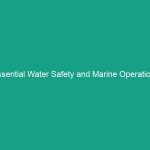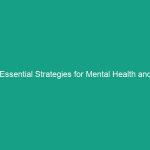Good Morning Team!
Today, we’re going to discuss a critical topic that affects not just our workplace but our overall health: Essential Strokes: Signs and Emergency Response You Must Know Today. Understanding strokes and knowing how to respond can save lives, both in and out of the workplace. So let’s dive in!
Understanding Essential Strokes
A stroke occurs when the blood supply to part of the brain is interrupted or reduced, preventing brain tissue from getting oxygen and nutrients. This can lead to brain damage or even death. Recognizing the signs of a stroke and knowing how to respond quickly is vital for Workplace Safety. Every minute matters during a stroke!
Common misconceptions include thinking that strokes only happen to older individuals; however, they can affect anyone, regardless of age or health status. Being informed is the first step in Prevention and response.
Key Hazards, Risks, and Safety Considerations
Strokes can occur suddenly and without warning. The following are some specific Hazards and risks related to strokes:
- High-stress environments: Stress can elevate blood pressure, increasing stroke risk.
- Poor lifestyle choices: Lack of exercise, unhealthy diets, and smoking contribute to stroke risks.
- Ignoring symptoms: Failing to recognize the signs of a stroke can lead to delayed treatment.
Real-world consequences of ignoring these hazards can include long-term disabilities, loss of productivity, and even fatalities. It is crucial to remain vigilant and proactive about health and Safety.
Best Practices, Procedures, & Actionable Advice
Here are the essential signs of a stroke you should know, often remembered by the acronym FAST:
- F – Face drooping: One side of the face may droop or feel numb. Ask the person to smile; their smile may be uneven.
- A – Arm weakness: One arm may feel weak or numb. Ask the person to raise both arms; one arm may drift downward.
- S – Speech difficulty: Speech may be slurred or strange. Ask the person to repeat a simple sentence; they may struggle.
- T – Time to call emergency services: If you observe any of these signs, call emergency services immediately.
In addition to recognizing symptoms, here are some practical tips for emergency response:
- Stay calm and reassure the person experiencing the symptoms.
- Do not give them food or drink, as swallowing may be impaired.
- Note the time the symptoms started; this information is crucial for medical professionals.
- Ensure someone is calling for help while you assist the affected individual.
In a workplace incident, always have a designated first-aid responder who is trained to manage such emergencies. Regular drills can also enhance preparedness.
Regulations, Standards, and Compliance
Understanding and complying with safety Regulations is critical. The Occupational Safety and Health Administration (OSHA) emphasizes health education and emergency response Training in the workplace. Compliance with these regulations not only protects employees but also reduces liability for the company.
Regular training sessions and refresher courses on recognizing and responding to strokes should be part of your Workplace Safety program. This not only promotes a culture of safety but also empowers employees to act decisively in emergencies.
Employee Engagement & Discussion
Let’s discuss: What safety challenges have you encountered related to recognizing strokes? How prepared do you feel to act if you witness someone showing symptoms of a stroke? Sharing experiences can help us learn from one another and improve our response strategies.
Conclusion & Key Takeaways
In summary, understanding the signs of strokes and knowing how to respond can make a significant difference in emergency situations. Remember the acronym FAST, and don’t hesitate to call for help when needed. Your awareness and quick action can save lives!
Let’s prioritize our health and the health of our colleagues. Thank you for your attention, and let’s continue working together to create a safer workplace!


